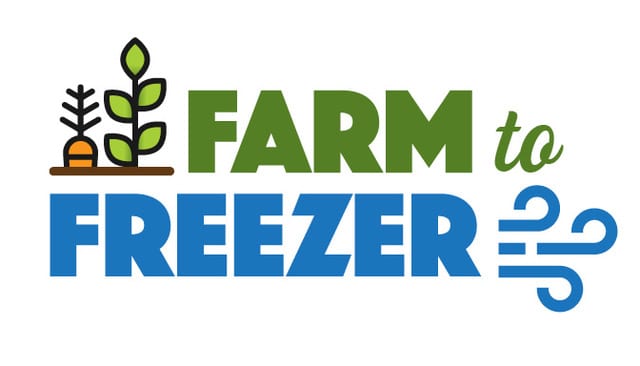
Food Security Task Force and Farm-to-Freezer Update
What if we could ensure a market for local farmers and feed our food-insecure neighbors in one program? That’s the Farm-to-Freezer project in a nutshell, and it’s just one idea cooking in the Food Security Task Force, convened in late March by the Community Foundation at the request of Whatcom Unified Command.
While the focus is on responding to the health and economic effects of Covid-19, the vision includes establishing systems that support long-term food security. For example, while Farm-to-Freezer is being launched in response to the pandemic, the intent is to make it an ongoing program.
The FSTF addresses six key factors of food security, ranging from production to policy. Based on our extensive work supporting local food and agriculture, Whatcom Unified Command asked Whatcom Community Foundation to convene the Covid-19 Food Security Task Force, (FSTF), which comprises more than 25 organizations.
The task force, which meets virtually twice a week, includes all regional food banks and public schools countywide, as well as the Opportunity Council, Council on Aging/Meals on Wheels and More, Whatcom Family Farmers, Salvation Army, Puget Sound Food Hub, Sustainable Connections, Miracle Food Network, YMCA, and retail grocery stores, including the Community Food Co-Op.
Our goal is simple, though by no means easy: To ensure food security for all Whatcom County residents, particularly those with barriers to food access (economic, mobility, health, etc.), while maximizing nutrition and minimizing health risks during the Covid-19 pandemic.
As food banks and feeding organizations across the United States are seeing record yet unpredictable growth in the need for their services, the supply chains for these organizations are already facing significant challenges. This is particularly acute for foods like rice, beans and consumer-packaged canned goods, as these organizations try to provide more shelf-stable products to clients.
Washington state’s annual budget for its Emergency Food Assistance Program is $6 million; today, the current “burn rate” across the state for purchased food is estimated at $5.5 million per week. Typically, somewhere between 60-70 percent of food distributed by food banks is donated by the food industry; the rest is purchased. As many of those traditional streams have been interrupted, that ratio has basically been inverted; i.e. while demand rises to record levels, food banks are faced with having to purchase more of their food than ever before. State officials estimate that 1 in 4 people in Washington will need food assistance through September if not longer.
800,000 Meals in April
Locally, the pace of growth and inconsistent demand continue to make planning and execution difficult for organizations. Before the pandemic, about 15 percent of the county’s population experienced food insecurity. Since then, unemployment has nearly quadrupled. In May, an estimated 800,000 meals were distributed in Whatcom County by school districts, food banks, Meals on Wheels and others.
While we don’t know the duration of this crisis, we do know that the scope of need is tremendous, and we have to move fast. We are modeling food demand for vulnerable populations countywide, with an initial focus on forecasting food demand/supply, and then on logistical capacity/constraints and creative solutions to meeting demand.
Food Security System Planning
In early May, we brought members of the task force together for a work session to bring all facets of this work into a focused effort that merges big-picture thinking with practical action that both drives efficiency and builds economic recovery — for example, by leveraging excess farm capacity for production and enlisting the local restaurant sector to participate in food processing, preparation, storage and distribution. Or by coordinating efforts between food banks and school districts, so that families don’t have to go to two different places.
A Big Pivot
 The Food Security Task Force work streams cover six key factors of food security: production, processing, distribution, procurement, policy and financing. Production is focused on mobilizing our local farming community, as well as community gardeners, to plant extra crops. Questions in this area center around seed financing and food packaging, as well as uncertainty for farmers, who have seen markets they rely on — restaurants, caterers, etc. — shuttered with no certainty as to when, if or how much they’ll come back. We need to make sure that our farmers are economically viable and can produce at scale.
The Food Security Task Force work streams cover six key factors of food security: production, processing, distribution, procurement, policy and financing. Production is focused on mobilizing our local farming community, as well as community gardeners, to plant extra crops. Questions in this area center around seed financing and food packaging, as well as uncertainty for farmers, who have seen markets they rely on — restaurants, caterers, etc. — shuttered with no certainty as to when, if or how much they’ll come back. We need to make sure that our farmers are economically viable and can produce at scale.
In terms of processing our local harvest, Bellingham Public Schools has the ability with their new, world-class central kitchen to produce up to 20,000 meals per day. Using this resource — as well as the production capacity of other districts — will take a major mobilization effort but is one that we should invest in as the needs of our community change and grow this spring and summer. Our local restaurant sector can also be a great source of capacity and innovation in this arena. For example, we are working with Bellingham Public Schools, Bellingham Food Bank and others on a Farm-to-Freezer project. The goal is to capture lots of this summer’s harvest, process it into soups and stews and store it for use to ensure family/community food security in the late fall and winter. While it’s being launched in response to the pandemic, the intent is to make it an ongoing program.
Fresh Food
We are expanding efforts to get more fresh food to people, knowing that perishables double the amount of truck capacity required, and that we’ll need to address challenges, such as refrigerated storage capacity. Having several community distribution hubs will be key in ensuring safety and access, as are food boxes for delivery to our most vulnerable citizens.
We are also working on more coordinated purchasing efforts among school districts and food banks. One immediate request from food banks and other local feeding organizations is the ability to purchase food through retail networks (Costco, grocery stores, etc.) rather than rely on their traditional national networks which are currently seriously constrained.
The task force is helping to elevate policy opportunities that will improve our community’s ability to meet basic needs during the crisis and potentially beyond. We need to support long-term solutions, from planting extra crops and more collective purchasing to enabling Bellingham Public Schools and others to scale their food operations.
Giving More Important Than Ever
Between foodstuffs, equipment and facilities improvements, we estimate funding needs of $1-$2 million. While philanthropy alone cannot meet this need, with the generosity of our entire community, we can infuse critical funding when and where it’s needed. For those who can, giving now is more important than it has ever been.





No Comments